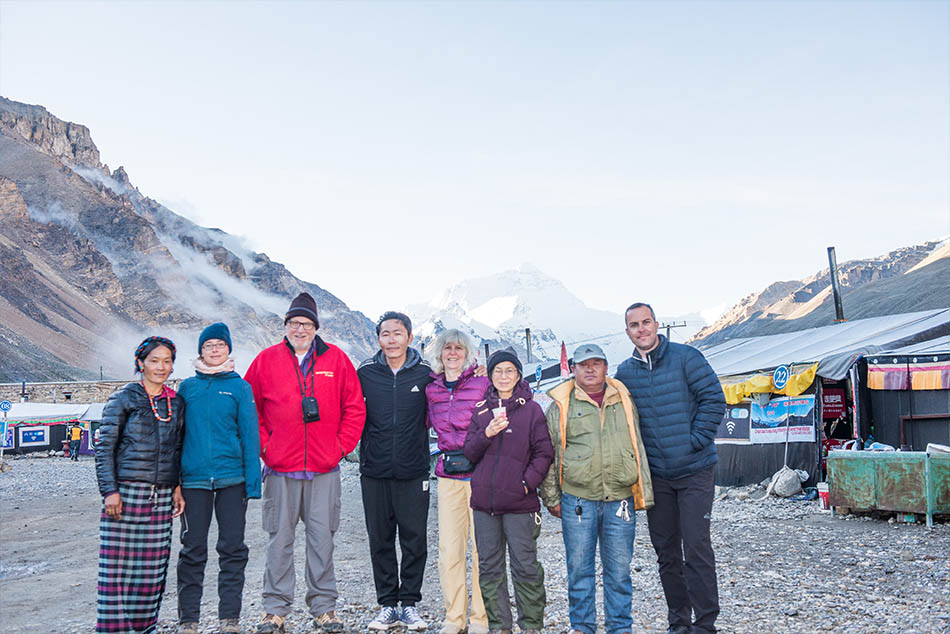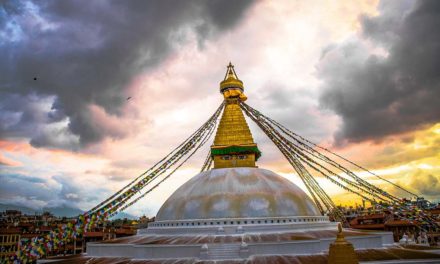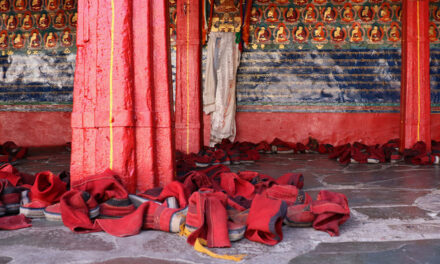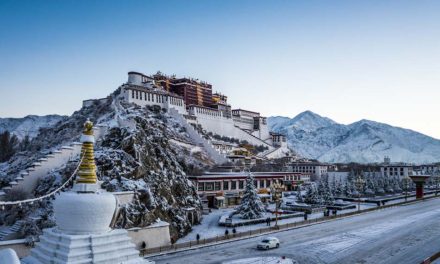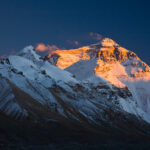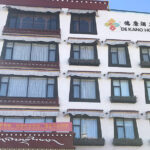Estimated reading time: 8 minutes
All the travellers visiting Tibet must be aware of Mountain sickness before their Tibet travel. Inadequate acclimatization in Tibet could lead to altitude Mountain sickness in any traveller going to 2,500 meters or higher. Mountain sickness can be severe and can affect your holiday in Tibet. If not taken care of, it would lead to death.
Why low oxygen in Tibet.
We all know the earth has pulling energy called gravity. This gravity energy pulls us and everything toward the surface of the planet, which is why our feet touch the floor. Like all the obvious things, the air gets pulled towards the surface of the earth. The higher you go in the atmosphere, the density of air reduces. The higher elevated place like Tibet has thinner air. People living in lower elevations are not used to the lower oxygen level atmosphere of Tibet. Hence would need time and relaxation to adjust to it or may lead the body to react, which is all Acute mountain sickness.
Altitudes in Tibet
The entire area of Qinghai Tibetan Plateau is known as the roof of the world. Nestled between mountain ranges like the daunting Himalayas and the Kunlun mountain ranges, Tibet is known for offering some excellent views of nature and other reasons for visiting Tibet.
The average elevation exceeds 4500 Metres above sea level. The plateau stands over 4.5 Kilometer above the sea level, and it is surrounded by imposing mountain ranges.
Travelling Tibet in such high altitudes becomes a difficult task with the lack of oxygen, and the trekker can suffer from conditions like dizziness, vomiting, or sleeplessness. The condition can get worse during sleep as the body respiration decrease. Some travellers can easily and quickly adjust to these altitudes, But others may not be able to adapt and to get sick.
Altitude sickness may be a common occurrence, when travellers ascend to a high altitude quickly, flying directly from sea level. If not taken care of it, the condition will soon get worse. It is essential to know well about the sickness and on how to take good care of your health.
During your Tibet travel, the lowest elevation would be either at 3600 meters in Lhasa or 3568 meters on Tsedang. Acclimatization is the utmost importance when you are travelling to any region of Tibetan Plateau, including Tibet, Mount Everest Basecamp, Mount Kailash, Amdo, and Kham. Here Travelers might feel headaches, dizziness, sleeplessness; all these are symptoms of the Acute Mountain sickness. So plan your tour in such a way that you will have enough time and rest to acclimatize the high elevation of Tibet. Before arriving in Tibet, have proper medication, and consult your doctor for it.
What is Mountain Sickness
Mountain sickness is a condition that can occur when your body doesn’t get enough oxygen. Place on high elevation has lesser oxygen than compare with the sites with lower altitudes. When you go to Tibet from the lower area, your body has a hard time to adjust to the change in oxygen level.
Altitudes and Acute Mountain Sickness
At high altitudes of Tibet with a lower level of oxygen, your breathing rates become higher as your body tries to take in more oxygen. Everyone adjusts to height differently. The symptoms of High altitude sickness generally become visible above the elevation of 3000. So it best to stop at an altitude around 3000 meters for 2-3 days to adjust to the height before ascending higher. For this reason, we always recommend our clients to either stop at Xining (2782m) or Nyingchi (3016m) before coming up to Lhasa (3600m).
Higher the elevation is, the severer the AMS becomes. So try to avoid ascending directly to such high altitude directly from sea level if you are not able to acclimatize properly, more back to the lower area.
Ask the potentially affected person to do certain like to walk in a straight line, placing his tow to his heel and soon. If he fails these simple tests, it is a pretty good sign that AMS has advanced into a moderate or severe condition.
What are the Symptoms of Acute Mountain Sickness
Following is a list of symptoms and possible cures for the different levels of AMS:
1) Mild AMS
Symptoms: Headache, faintness, tiredness, shortness of breath, loss of appetite, vomiting, troubled sleep, and a feeling of sickness
Possible cure: Medication and/or descend
2) Moderate AMS
Symptoms: Reduced coordination (ataxia), Severe headache (not relieved by medicine), other mild level symptoms with increased effect
Possible cure: Advanced Medication and/or Immediate Descent around 305-610 m
3) Severe AMS
Symptoms: Inability to walk, declining mental status, and fluid build-up in the lungs
Possible cure: Emergency Evacuation, Oxygen, Gamow Bag (a portable Hyperbaric chamber) Immediate Descent around 610-1,220 m
Acclimatization in Tibet
The process of getting adjusted at high elevation is known as acclimatization. The best practice to acclimatization in Tibet is to stop at a certain level without shooting up to the high altitude. It is recommended to stay at about 3000 meters (maybe at Xining) for two days, stop at 3600 M in Lhasa for three days, and gradual ascent up to the Mount Everest and other higher regions.
Consult your doctor about your plan to visit Tibet. Your doctor can prescribe you some medicine to help your acclimatization in Tibet. There are some medications you might buy it directly. Many of those medicines are not available in the Chinese market. Hence it is recommended you buy it from home.
You can also read about out FAQ on How do I prevent high Altitude Sickness in Tibet?
What happens to your body when acclimatizing?
Here are the changes that take place in the body to allow it to operate at ease with decreased oxygen.
- You will start to breathe deeper.
- There will be an increase in pressure of blood to portions of the lung, which usually are not used during sea level breathing.
- More red blood cell will be produced in our body to carry oxygen.
- Your body will produce more enzymes, which facilitates the release of oxygen to body tissue.
Guidelines for Better Acclimatization in Tibet
The following are some guidelines to help you better acclimatize in Tibet.
1) Ascend slowly
Always go up slowly. Take two days in Xining or Nyingchi and three days in Lhasa to acclimatize. After Lhasa, only increase your altitude by 350 meters per day. On the route, if you stop at a high mountain pass, only stay for a few minutes and try to descend as fast as possible. On every 900 meter increase in elevation, take a rest day.
2) Stat hydrate
Acclimatization is accompanied by fluid loss. You will need to drink a lot of water to remain hydrated. Your urine will be copious and clear. In the place of water, use supplement drinks like oral rehydration salts, beverages like juice, soup, garlic favoured water and milk.
You can put a piece of garlic in your water bottle. Garlic can help regulate the oxygen level back to normal. Too much black tea and coffee can dehydrate you.
3.) Travel high sleep low
When you sleep, your rate of breath declines. So it is recommended to spend the day at an altitude more elevated than your sleeping altitude. Please make sure you sleep as low as possible.
4.) Do not exhaust yourself
You should avoid unnecessary exertion. Do not indulge in any activity that may lead to heavy breathing and even headaches and nausea. A simple task like slow walking can be exhausting with the lack of available oxygen. So limit your activity and make sure you are getting lots of rest.
5.) Avoid alcohol
Avoid alcohol and any other drug during your Tibet trip. These can lead to respiratory complications during your sleep. Save the celebration with beer on your return to Lhasa at the end of the tour.
6.) Keep your body warm
Keep your body warm always. Always have the additional layer ready with you all the time. You don’t want to catch a fever in Tibet. It would lead to all the complications of the AMS.
7) Eat enough carbohydrates
In Tibet, it is best to eat food with high carbohydrates. Carbohydrates are 70 more absorbable to your body.
8) Pack your medicine for AMS
It is recommended to consult your doctor for suitable medication to prevent AMS. Most drugs for high altitudes increase your oxygen absorption in your blood; it needs to take at least a few days before travelling to Tibet.
As mentioned above, most medicine for high elevation is not available in the market in Tibet. So please bring enough.
9) Pack small oxygen cylinder
If you are travelling to Tibet with a responsible travel agency like i-Tibet travel and Tibet Universal travel. They will always have an oxygen cylinder in the car all the time and 24×7 customer care you can call to. If you are travelling with other travel agencies, it is recommended to arrange a small oxygen cylinder.
10) Finally, book your Tibet tour with a responsible travel agency
Excellent drivers and guides come with a better and responsible travel agency. It is often useful to read through reviews and recommendations before booking the tour.
Here in Tibet, you, as a traveller, will have to depend significantly on your travel agency. So book the journey with such a travel agency that is legally valid and physically present to meet you in Lhasa. There are lots of fake travel agents with no legal entity. Be aware of Tibet travel Scams.
Conclusion of Acclimatization in Tibet
Acute Mountain sickness or High Altitude sickness is severe and could lead to severe consequences to your health and life and quality of your Tibet tour. Above are just a drop on the ocean of knowledge regarding it. Read more about it on the internet, book, and, more importantly, consult your doctor.
Another critical part is to book a tour with a responsible and legal travel agency in Lhasa. Your travel agency plays an essential role in it.
You can read more Tibet travel guide from this link or visit our travel agency website: https://itibettravel.com

